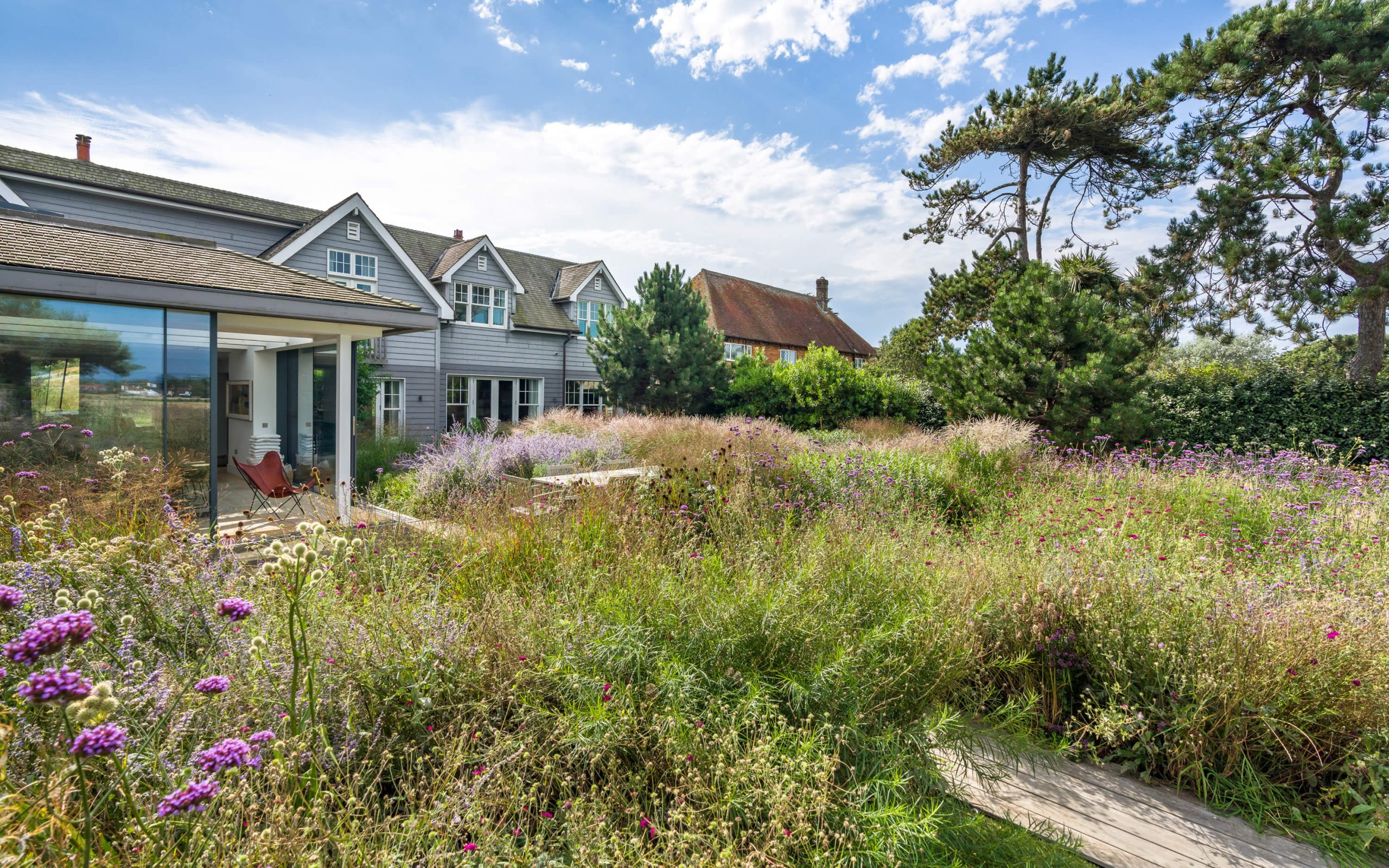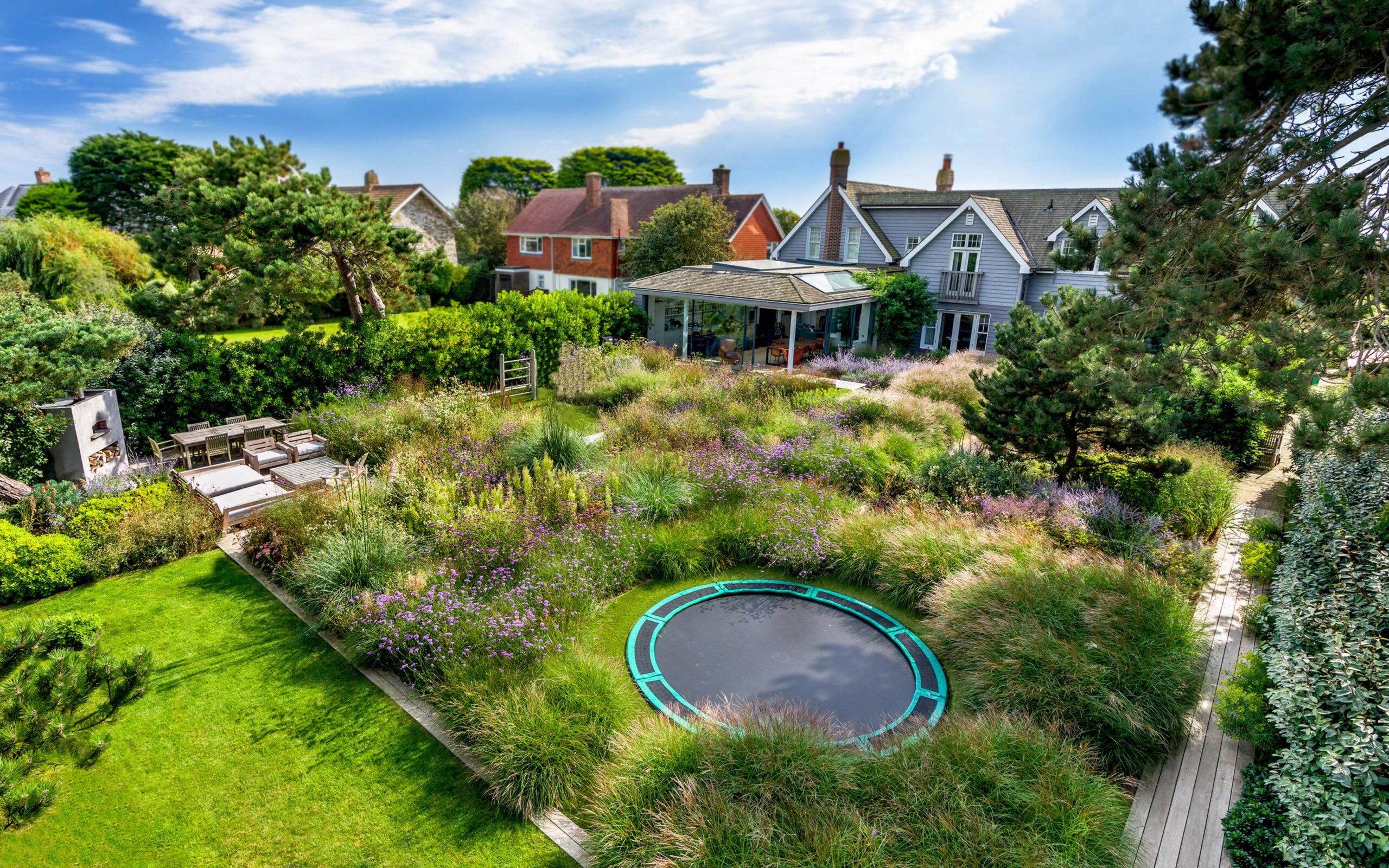The Garden Design Philosophy of Tom Stuart-Smith: Blending Naturalism and Modernity
Tom Stuart-Smith is widely regarded as one of the most influential landscape architects and garden designers of our time, celebrated for his ability to weave naturalism with modernity in gardens that resonate with emotional depth and ecological sensitivity. His work, spanning private estates, public parks, and show gardens, reflects a thoughtful balance between structured design and the organic beauty of nature. With eight gold medals from the Chelsea Flower Show, three of which earned the coveted “Best in Show” title, Stuart-Smith has established an international reputation for creating landscapes that are both timeless and innovative. This essay explores the core elements of his design philosophy, his approach to integrating gardens with their surroundings, and the lasting impact of his work, drawing on key projects and his own reflections.
Early Influences and Background
Born on February 14, 1960, in Hertfordshire, England, Stuart-Smith grew up on the Serge Hill estate, a family property purchased by his grandfather in 1927. This rural setting profoundly shaped his connection to the land, fostering a lifelong fascination with nature and its interplay with human environments. His academic journey began with a degree in Zoology from the University of Cambridge, which instilled a scientific understanding of ecosystems that later informed his planting schemes. Following this, he pursued a postgraduate degree in landscape architecture at Manchester University in 1982, a pivotal step that merged his love for nature with a passion for design. His early experiences, including encounters with landscape architects like Lanning Roper and Geoffrey Jellicoe, inspired him to view gardens not merely as aesthetic spaces but as dynamic systems that connect people to place.
After working with firms like Colvin and Moggridge and Elizabeth Banks Associates, Stuart-Smith established his own practice in 1998. His debut at the Chelsea Flower Show that same year, in collaboration with Chanel, marked the beginning of a career defined by innovation and excellence. His personal garden at The Barn, a converted 17th-century structure on the Serge Hill estate, became a living laboratory for his ideas, allowing him to experiment with planting and design in a hands-on way. As he notes, “If I haven’t done something myself, I always feel a bit of a fraud suggesting it to clients”. This hands-on approach underpins his ability to translate experimental concepts into practical, enduring landscapes.

Tom Stuart-Smith West Wittering, West Sussex Garden Design – Landscaping by Graduate Landscapes
Design Philosophy: Naturalism Meets Modernity
At the heart of Stuart-Smith’s design philosophy is the seamless integration of naturalism and modernity. His gardens are characterized by a “gradient of naturalism,” where structured elements near buildings gradually give way to looser, meadow-like plantings further out, creating a dialogue between human intervention and the natural world. This approach is evident in his own garden at The Barn, where formal courtyards with Corten steel water tanks—repurposed from a 2006 Chelsea show garden—transition into expansive perennial meadows and prairies. These spaces embody his belief that gardens should be “transformational spaces that stop you in your tracks,” encouraging a deeper awareness of nature.
Stuart-Smith’s designs prioritize the overall atmosphere and composition over immediate aesthetic concerns like colour. He famously delays discussions about plants and colours until the later stages of design, sketching initial plans in pencil to focus on structure, narrative, and context. This methodical approach ensures that his gardens are not just visually striking but also deeply rooted in their environment. For instance, at Broughton Grange in Oxfordshire, one of his earliest large-scale projects, he reimagined a traditional box parterre as a pattern inspired by a leaf’s cellular structure under a microscope, blending scientific inspiration with artistic expression. This project, described by Stuart-Smith as “still one of the best things I have done,” showcases his ability to innovate within the framework of classic garden design.
Ecological Sensitivity and Sustainability
A hallmark of Stuart-Smith’s work is his commitment to ecological diversity and sustainability. His planting schemes are inspired by natural plant communities, using species that are well-suited to their environment to create resilient, low-maintenance landscapes. At The Barn, he established a prairie meadow in 2010, sown from seed and requiring only a fraction of the maintenance of a conventional border. This meadow, filled with Rudbeckias, asters, and Echinaceas, exemplifies his philosophy of “enabling” nature rather than controlling it, allowing plants to self-regulate once established. He emphasizes, “There is no design beyond the seed mix. It is an encounter with nature”.
Sustainability is further reflected in his use of local materials and his focus on improving ecological richness. At the RHS Garden Bridgewater in Greater Manchester, one of Europe’s largest new garden projects, Stuart-Smith’s masterplan integrates native and adaptive plants to enhance biodiversity while creating a visually cohesive public space. His work at Knepp Castle, known for its rewilding efforts, controversially employed glyphosate to manage weeds, highlighting the practical challenges of balancing naturalistic ideals with real-world constraints. Despite such choices, his overarching ethic is to create gardens that endure, fostering a connection between people and the landscape.

Projects
Stuart-Smith’s portfolio spans an impressive range of projects, from private gardens to public landscapes. His work at Trentham Gardens, where he collaborated with Piet Oudolf to reimagine a vast Italianate parterre, challenged traditional expectations with bold, naturalistic plantings that contrasted with the formal structure. Similarly, his garden at The Hepworth Wakefield in Yorkshire, designed in 2019, is a vibrant, open-access space that complements the modernist gallery while offering year-round interest through carefully selected plants like yarrow, Russian sage, and coneflowers. Described as “anti-minimalist,” this garden invites public engagement, with sinuous paths and rich plantings inspired by Barbara Hepworth’s sculptures.
His contributions to royal commissions, such as the garden at Windsor Castle for Queen Elizabeth II’s Golden Jubilee, demonstrate his ability to work on a grand scale while maintaining a personal touch. The two-hectare garden around the Bicentenary Glasshouse at RHS Wisley, opened by the Queen in 2007, further showcases his skill in blending monumental architecture with lush, naturalistic plantings. These projects highlight his versatility, from intimate courthorpe to expansive estates, all unified by his signature blend of structure and spontaneity.
The Barn Garden: A Personal Expression
The Barn Garden at Serge Hill is perhaps the purest expression of Stuart-Smith’s philosophy. Begun in the late 1980s, it has evolved alongside his family, with areas like the vegetable garden tended by his wife, Sue Stuart-Smith, a psychotherapist who has written about the therapeutic power of gardening. The garden’s sunken courtyard, with its Corten steel tanks and colorful perennials, contrasts with wilder meadows and a swimming pond, reflecting Stuart-Smith’s playful yet profound approach to design. He describes it as a “playground” where he can “make impulsive decisions” and “rootle around,” a space that both inspires and grounds his professional work.
The Plant Library at Serge Hill, containing around 1,500 varieties of mainly herbaceous plants, serves as an educational resource for designers and visitors, underscoring Stuart-Smith’s commitment to sharing knowledge. Through initiatives like The Serge Hill Project for Gardening, Creativity, and Health, he and Sue promote gardening’s mental and physical benefits, aligning with his belief that gardens are “a relationship with place, with nature, and, to some extent, with existence itself”.
Legacy and Influence
Awarded an OBE in 2023 for his contributions to landscape design, Stuart-Smith continues to shape the field with his innovative approach. His gardens, whether at The Barn, Broughton Grange, or The Hepworth Wakefield, invite us to see landscapes not as mere backdrops but as living, breathing entities that connect us to the world around us. As he eloquently states, “The garden can be a place where the sense of otherness, of nature and of place is so strong that we have a powerful awareness of being, not masters of all we survey, but players in a greater drama”. Through this lens, Stuart-Smith’s work redefines garden design as an act of co-creation with nature, leaving a legacy that inspires both garden lovers and professionals alike.
